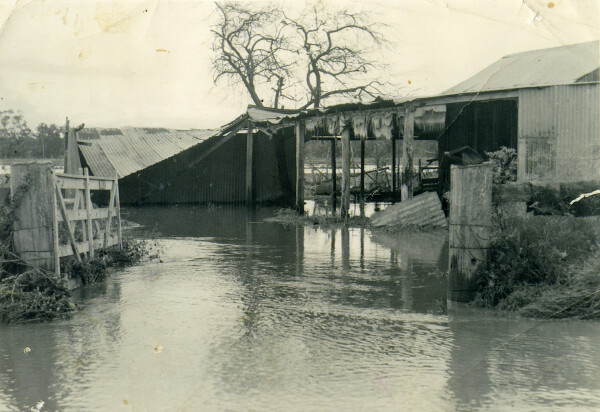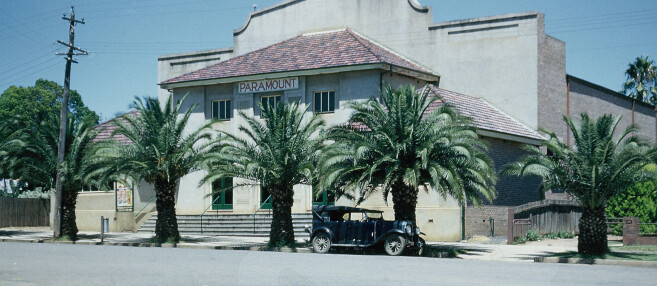
Australian Heritage Festival 2024
The festival runs from 18 April – 19 May. The 2024 theme is Connections.
An annual celebration that acknowledges our link to people, places and the past. Engage with heritage in your local area with a joint program by Camden Libraries, Camden Historical Society and Camden Area Family History Society.
Camden Library Services presents an online exhibition Camden Voices.
|
An exhibition of photographs from our Camden Images combined with memories from our Camden Voices oral history collection. Get lost in the memories of some of our wonderful oral history interviews whilst viewing photographs from our Camden Images collection. Be transported by Pansy the Camden Train, explore the magic and wonder of the 'Big House' through the eyes of a young boy. Swim in the pristine Nepean River and make a new home via a loved library card. Click on the coloured name link to access a 'memory' from the oral histories. These will relate to the images below. |
|
Pansy the Camden Train. Image courtesy of Camden Library Local Studies, CLS 0552. |
|
Click on the link below to access a memory from Michael Wheeler's oral history: Michael Wheeler's full oral history available at: https://camden.spydus.com/cgi-bin/spydus.exe/ENQ/WPAC/BIBENQ?SETLVL=&BRN=165882
|
|
Camden Park House ('The Big House'). Image courtesy of Camden Historical Society, CHS 0715. |
|
Click on the link below to access a memory from Harry Warner's oral history: Harry & Frances Warner's oral history available at: https://camden.spydus.com/cgi-bin/spydus.exe/ENQ/WPAC/BIBENQ?SETLVL=&BRN=104431 |
 |
| Chinese market garden in flood, c. 1940s. Image courtesy of Camden Historical Society. CHS3079. |
|
Click on the link below to access a memory from Mick Starr's oral history: Mick Starr's full oral history available at: https://camden.spydus.com/cgi-bin/spydus.exe/FULL/WPAC/ALLENQ/15726013/813149,2#:~:text=https%3A//camden.spydus.com/cgi%2Dbin/spydus.exe/ENQ/WPAC/BIBENQ%3FSETLVL%3D%26BRN%3D104414
|
|
|
|
Camden Museum. Image courtesy of Camden Historical Society. CHS 1900. |
|
Click on the link below to access a memory from John Wrigley's oral history: John Wrigley's full oral history available at: https://camden.spydus.com/cgi-bin/spydus.exe/ENQ/WPAC/BIBENQ?SETLVL=&BRN=162572 |
|
|
|
Paramount Picture Theatre, 1950. Image courtesy of Camden Historical Society, CHS 3188. |
|
Click on the link below to access a memory from Joan Higgin's oral history: Joan Higgins' full oral history available at: https://camden.spydus.com/cgi-bin/spydus.exe/ENQ/WPAC/BIBENQ?SETLVL=&BRN=154534
|
|
Camden Library and Fire Station. Image courtesy of Camden Historical Society. CHS0859. |
|
Click on the link below to access a memory from Alba Marasco's oral history: Alba Marasco's full oral history available at: https://camden.spydus.com/cgi-bin/spydus.exe/ENQ/WPAC/BIBENQ?SETLVL=&BRN=104419
|
|
|
|
The Yewen Family swimming in the Nepean river, 1945. Image courtesy of Camden Historical Society, CHS 2133.
|
|
Click on the link below to access a memory from Betty Yewen's oral history: Betty Yewen's full oral history available at: https://camden.spydus.com/cgi-bin/spydus.exe/ENQ/WPAC/BIBENQ?SETLVL=&BRN=104415
|
For more information, please visit or contact Camden Library Local Studies at Researching Camden
Visit our online collection of historical photographs at Camden Images
Camden Museum and Camden Historical Society at www.camdenhistory.org.au
Camden Area Family History Service www.cafhs.org.au


